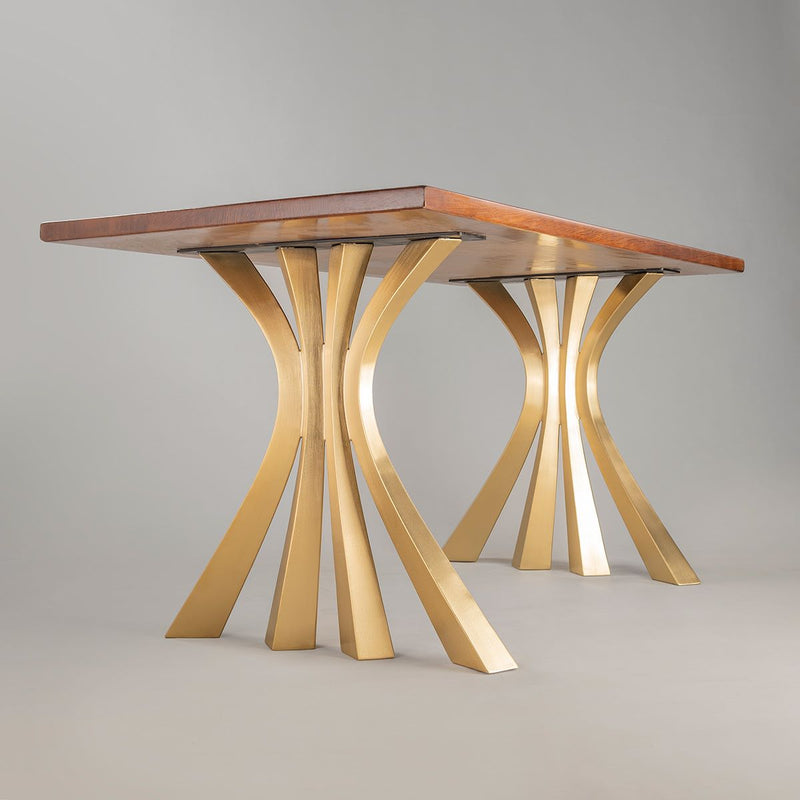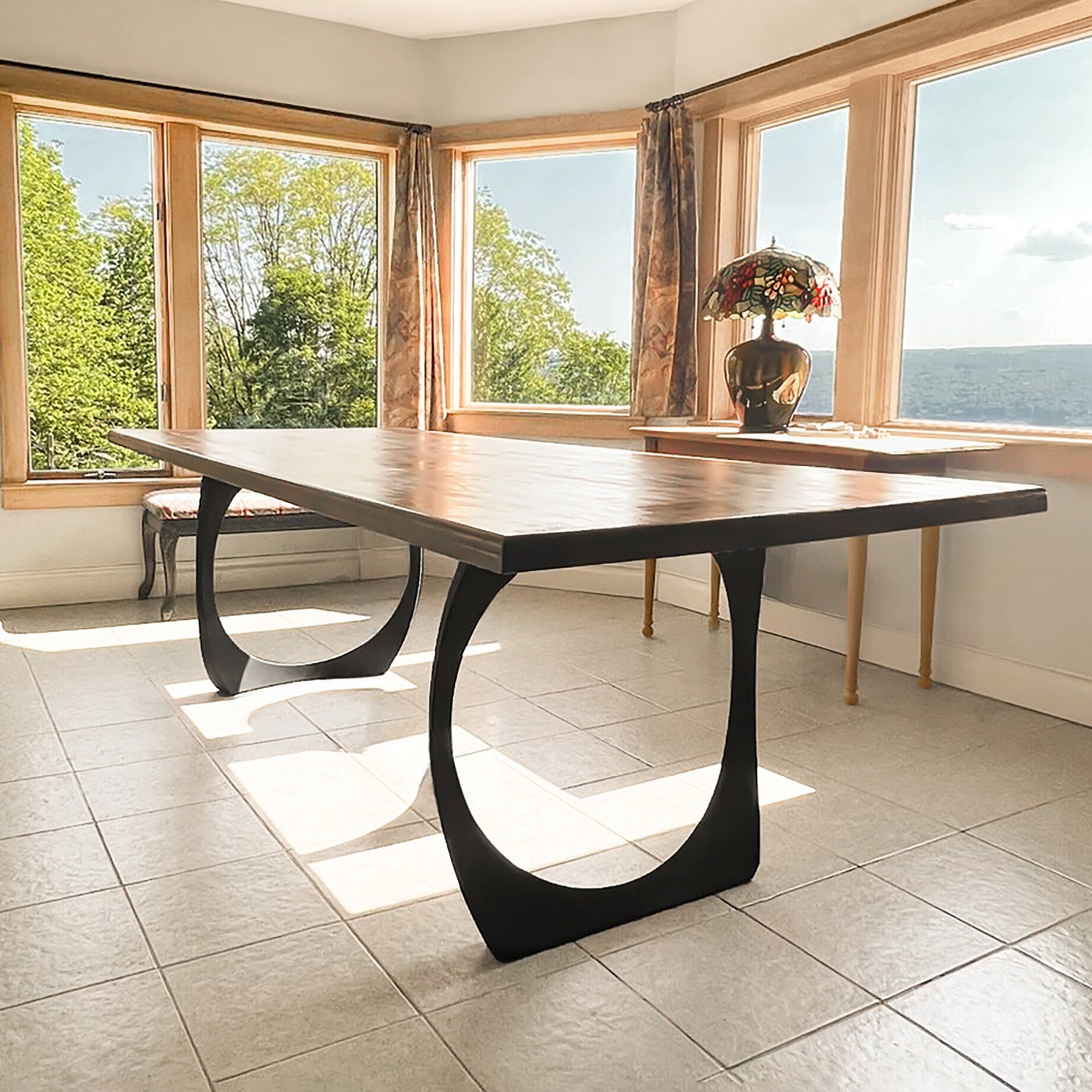Just how to Select the Perfect Dining Room Table Legs for Your Home Design
Just how to Select the Perfect Dining Room Table Legs for Your Home Design
Blog Article
Selecting the Perfect Table: What Styles Job Best for Your Home?
Picking the perfect eating table for your home can be a nuanced procedure that stabilizes visual appeals and capability. To browse these choices efficiently and locate a table that absolutely complements your home, think about the adhering to aspects in detail.
Evaluating Your Area
Reviewing the measurements and layout of your dining area is an important initial step in picking the perfect table. Begin by measuring the length and width of the room, representing entrances, home windows, and various other building functions that might affect table positioning. This ensures that your table not only fits however likewise enables for comfortable motion around it.
Think about the number of people you normally captivate. A table must fit your family's everyday needs while providing sufficient flexibility for occasional visitors. As a rule of thumb, allocate at the very least 24 inches of table size per individual to make sure a comfy dining experience.
It's also important to maintain appropriate clearance around the table. Preferably, there must be at least 36 inches between the table edge and walls or other furniture, allowing simple accessibility and activity. For areas where chairs with arms or added storage systems like buffets are included, enhancing this clearance to 48 inches is a good idea.
Illumination and environment play substantial duties also. Guarantee that your table straightens with existing illumination fixtures or prepare for adequate lighting services. This thorough spatial assessment guarantees that your dining table not just fits physically yet likewise harmonizes with your space's overall capability and aesthetic.
Popular Table Styles

Traditional dining tables typically feature luxuriant information, curved legs, and abundant wood coatings, evoking a sense of timeless style. They are perfect for homes with timeless style or those seeking to include a touch of elegance to their eating area.
Modern eating tables focus on simpleness and tidy lines, commonly integrating materials like glass and metal. These tables are suitable for contemporary areas, offering a sleek and clean look that matches minimal style approaches.
Rustic table, on the other hand, emphasize all-natural materials and a handmade appearance - dining room table legs. They often feature reclaimed timber and a troubled finish, creating a warm and inviting atmosphere. These tables work well in farmhouse-style homes or those looking for a comfy, natural feeling
Industrial eating tables integrate raw materials such as steel and timber, commonly showcasing a practical aesthetic. This style is fit for lofts or urban spaces, adding a touch of sturdy beauty and sturdiness to the eating experience.
Each style uses distinctive benefits, making it necessary to pick one that aligns with your home's total design and your individual choices.
Material Options
When selecting an eating table, the option of material plays a vital role in establishing both the table's appearances and functionality. Timber, metal, glass, and composite products each offer unique advantages and challenges, making it crucial to line up the material with your home's design and way of living needs.
Wood is a classic and functional option, offered in selections such as oak, walnut, and mahogany. Understood for its durability and heat, wood enhances both standard and contemporary insides. It requires regular maintenance to stop scrapes and bending.
Steel tables, frequently crafted from stainless-steel, light weight aluminum, or functioned iron, are commended for their modern allure and robustness. They are specifically matched for commercial or minimal settings yet can be susceptible to dents and might feel cold to the touch.
Glass dining tables bring an air of style and visibility, perfect for smaller sized areas as they produce an impression of more room. While easy to clean, glass can be susceptible to smudges and needs cautious managing to prevent chips and cracks.
Composite materials, such as MDF and plywood, deal cost-efficient and personalized remedies, though they might do not have the durability of natural materials. Picking the appropriate product ensures your dining table is both a useful property and an aesthetic pleasure.
Forming and Dimension Considerations
After determining the proper material for your table, the following consideration is selecting the right form and size to suit your room. The shape of the table considerably affects the space's aesthetic and capability. Rectangle-shaped tables, the most usual shape, are perfect for bigger areas and can fit a higher variety of visitors. They also permit for a much more official dining experience. Conversely, rounded tables foster a feeling of intimacy and are superb for smaller eating areas, urging conversation by removing corners and making everybody really feel similarly included.
As a regulation of thumb, allocate at the very least 24 inches of table width per person to guarantee comfortable dining. Additionally, consider the table's clearance space: there should be at the very least 36 inches in between the table side and the wall surfaces or other furniture. Extending tables offer flexibility if you regularly organize bigger events, offering additional seating when required without inhabiting additional space daily.
Matching Your Decor
Picking a table that harmonizes with your existing useful link style is essential in creating a natural and inviting space. Begin by analyzing your present interior decoration style, whether it be modern, traditional, rustic, or eclectic. The table need to match the overall visual, not contend with it. A streamlined, minimalist table with tidy lines is excellent for a modern home, while a vintage, elaborate table fits an extra standard setup.
If your design includes warm tones and all-natural materials, consider a wooden table to enhance the organic feeling. Alternatively, a glass or steel table may be much more ideal in a space controlled by amazing shades and commercial aspects.
Structure plays an important role as well. A rough-hewn, redeemed timber table can add character to a rustic room, while a sleek marble surface can boost a glamorous eating area. Consider the scale and proportion of the table in relation to the room dimension and existing furnishings. A well-matched table not only enhances aesthetic see this website allure yet additionally enhances the general dining experience.

Conclusion
Picking the excellent dining table demands mindful factor to consider click to find out more of room, design, products, shape, and size. Conventional tables complement classic interiors with rich wood finishes, while modern-day tables match modern settings through glass and metal.
Report this page